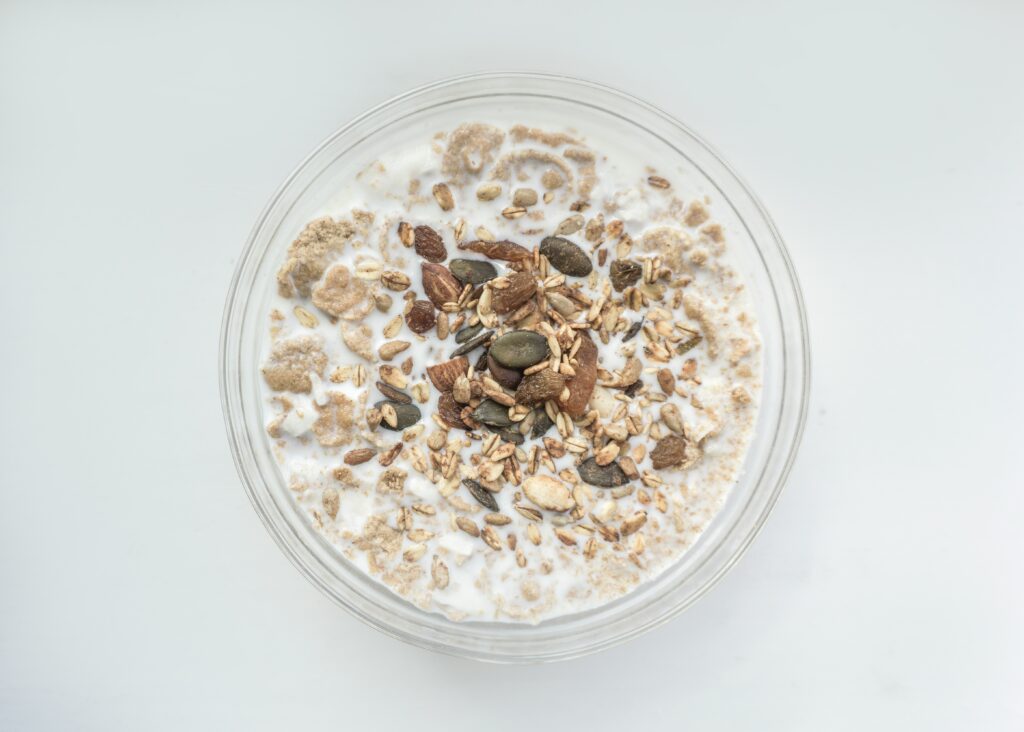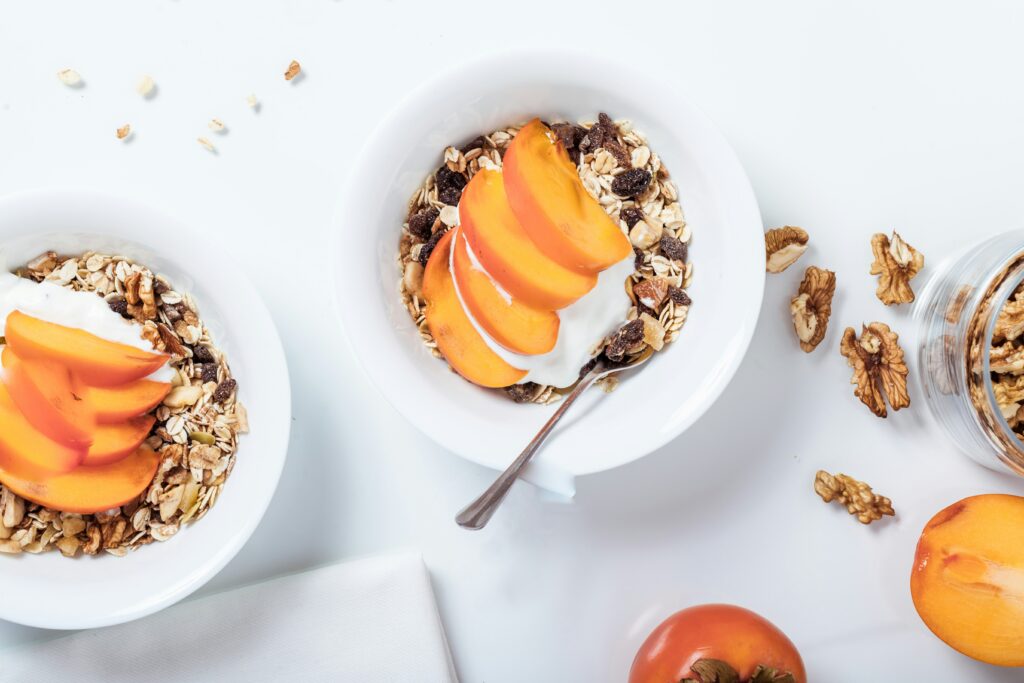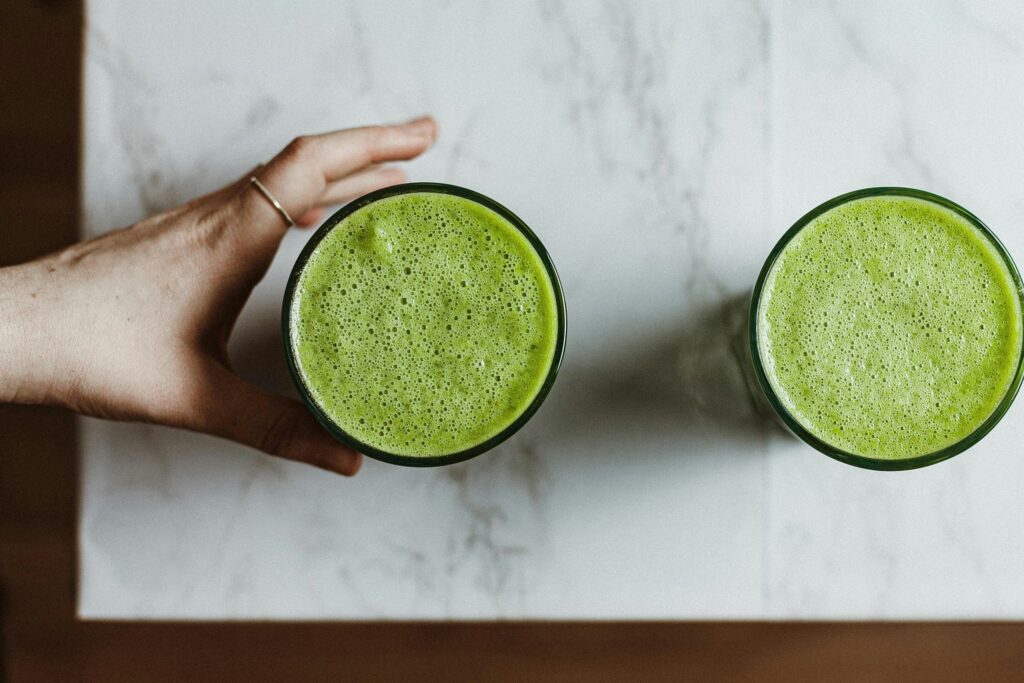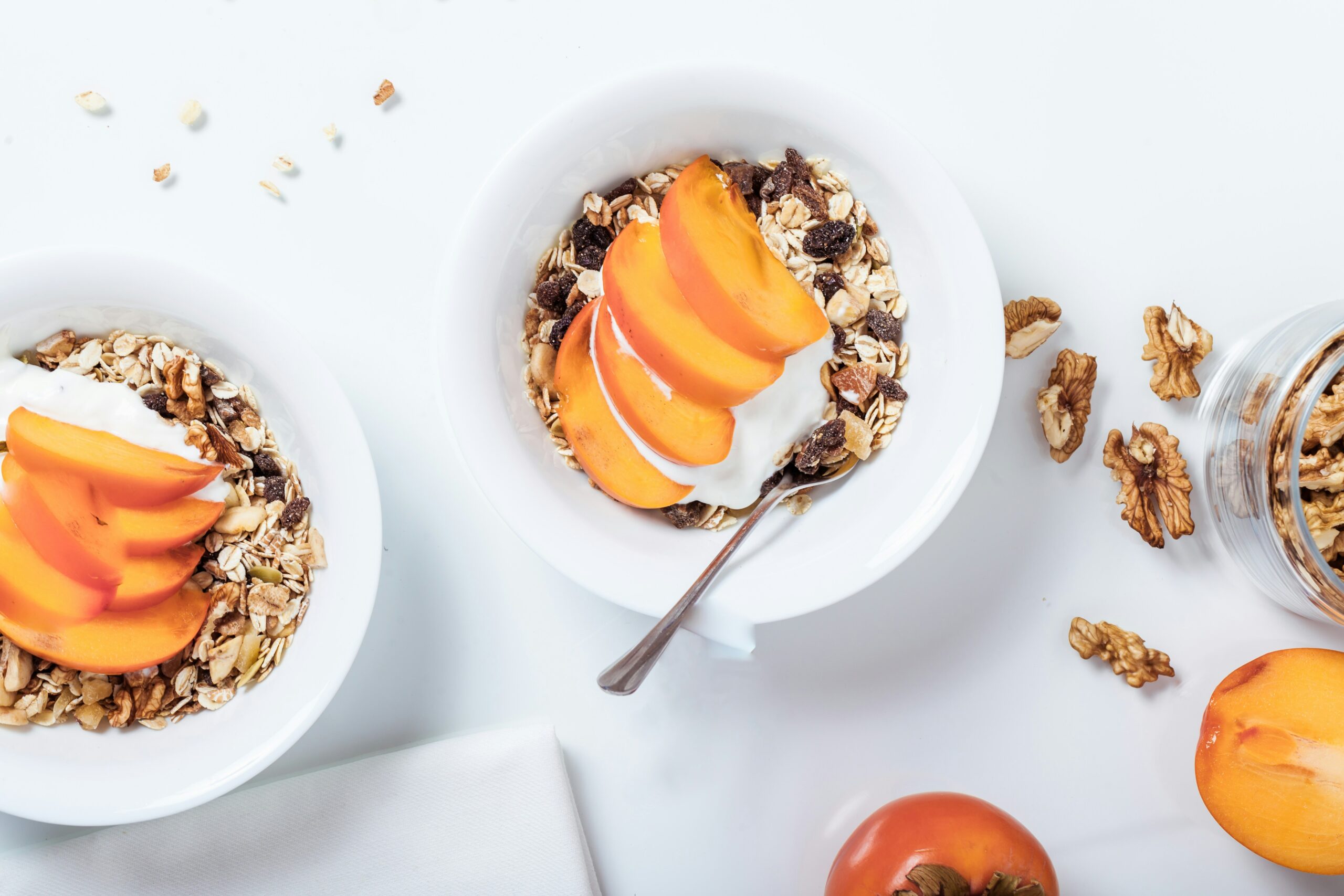The go to blog for ambitious professionals, who want to create sustainable career success despite chronic illness.
The 'Tired but Wired' Blog
Read this post →
When you’re living with a chronic illness, managing your workday often feels like balancing on a tightrope. Every task demands energy, but you’re working with a limited supply and once it’s gone, recovery isn’t as simple as “a good night’s sleep.”
That’s why doing an energy audit is a game-changer.
Just like a financial audit shows where your money is going, an energy audit helps you track where your precious energy is being spent, drained, or (hopefully!) replenished. It’s the first step in working smarter, not harder, while safeguarding your health.
If you’ve ever found yourself saying:
- “Why am I so exhausted after meetings?”
- “I’m busy all day but get nothing meaningful done.”
- “I don’t even know what to change to feel better.”
…then this post is for you.
What is an Energy Audit (And Why You Need One)?
An energy audit is a reflective exercise where you identify which activities in your workday:
- Drain your energy
- Replenish your energy
- Or leave you feeling neutral
It’s not about blaming yourself for being tired. It’s about building awareness, so you can make small, strategic changes that protect your health while staying productive.
Think of it as your personal guide to working smarter, not harder.
Helpful Resource: The ME Associations guide to pacing, explains how managing your energy levels through structured planning can support those with fatigue-related conditions.
How to Start Your Energy Audit in 3 Simple Steps
1. Track Your Workday (With Energy in Mind)
For 3-5 days, keep a simple log of your activities. After each task or meeting, rate your energy level:
- Energised (+)
- Neutral (0)
- Drained (-)
This can be a quick note in your phone or planner. The goal isn’t perfection, it’s awareness.
2. Spot the Patterns
At the end of your tracking period, look for trends:
- Which tasks consistently drain you?
- Are certain times of day worse?
- What activities give you a surprising energy boost?
Even small insights, like noticing that video calls are more draining than emails, can shape smarter work habits.
3. Take One Actionable Step
Choose one energy-draining habit to adjust. For example:
- Swap back-to-back meetings for focus blocks
- Batch admin tasks to avoid constant context switching
- Build in 5-minute rest breaks after draining activities
Small tweaks, done consistently, lead to big results over time.
Want more practical strategies? Download my free guide: 5 Powerful Strategies to Reduce Fatigue at Work to discover how simple changes can protect your energy.
Reclaim Your Energy and Redefine Success
An energy audit isn’t just a task, it’s a mindset shift. It’s the first step toward creating a work-life that honours both your ambition and your well-being.
If this resonates with you, you’ll love The Sunday Power-Up, my weekly newsletter filled with tips for balancing career success with chronic illness. Subscribe here for your weekly energy boost.
Disclaimer:
The content in this blog is based on my personal experience of living with chronic illness and is shared for informational purposes only. It is not intended as a substitute for professional medical advice, diagnosis, or treatment. Always consult with your GP or healthcare professional before making any changes to your lifestyle, work routine, or health management. The tips and strategies shared here can be used alongside medical advice to support your well-being.

Read this post →
You’re halfway through your workday, and suddenly, you hit a wall. Your body feels sluggish, your mind is foggy and no matter how much you push, you can’t seem to focus. Sound familiar? These hidden energy leaks in your work routine could be the culprit.
The good news? You don’t need to overhaul your entire workday to fix them. Small, intentional shifts can protect your energy, boost your productivity and leave you with enough stamina for the things you love outside of work.
1. Multitasking: The Productivity Myth
Multitasking might feel efficient, but in reality, it forces your brain to rapidly switch between tasks, consuming more energy than you realise. Research shows that switching tasks can reduce productivity by up to 40% and significantly increase mental fatigue. In fact, studies have found that multitasking can even lower your IQ. Forbes highlights how multitasking erodes productivity and cognitive function.
What to do instead: Try ‘time-blocking’ – dedicating set periods to specific tasks without interruption. Use the Pomodoro technique (25-minute focus sessions followed by 5-minute breaks) to keep your mind fresh while maintaining deep focus.
2. Always Being ‘On’
Notifications, emails and endless pings create a constant state of alertness, depleting your mental energy reserves before you even realise it. This heightened state of vigilance leaves you exhausted, making it harder to focus on meaningful tasks.
What to do instead: Set clear boundaries with notifications. Schedule specific times to check emails and messages rather than responding instantly. Consider using ‘Do Not Disturb’ mode, ‘Focus Mode’ or apps that limit digital distractions.
3. Poor Posture and Workspace Setup
An uncomfortable workspace doesn’t just lead to physical discomfort, it also drains your energy. Slouching, poor lighting and incorrect desk height force your body to work harder to maintain focus, increasing fatigue over time.
What to do instead: Optimise your workspace for ergonomic comfort. Ensure your screen is at eye level, your chair supports your lower back and your feet are flat on the floor. Small changes like using a wrist rest, adjusting screen brightness, or standing up every hour can prevent unnecessary energy depletion.
4. Skipping Breaks (or Taking the Wrong Kind)
Many professionals believe pushing through fatigue will help them get more done. In reality, skipping breaks leads to diminishing returns, making it harder to concentrate and increasing overall exhaustion.
What to do instead: Incorporate active rest – short movement-based breaks like stretching, deep breathing, or stepping outside. These breaks refresh both body and mind, helping you sustain your energy levels throughout the day.
5. Ignoring Hydration and Nutrition
Dehydration and unbalanced meals play a massive role in fatigue. Relying on caffeine or skipping meals can cause blood sugar crashes, leaving you feeling sluggish and unfocused.
What to do instead: Start your day with a protein-rich, low-sugar breakfast to maintain steady energy levels. Keep a water bottle nearby and set reminders to drink throughout the day. Reducing caffeine after midday can also prevent energy crashes later in the afternoon.
Take Control of Your Energy
Small changes can lead to big results. By identifying and addressing these hidden energy leaks, you’ll be able to work efficiently without draining yourself. The goal isn’t to work harder, it’s to work smarter, so you still have energy left for life outside of work.
For more strategies to protect your energy at work, download my free guide: 5 Powerful Strategies to Reduce Fatigue at Work. It’s packed with practical tips to help you stay productive without burning out.
Looking for ongoing support? Subscribe to my newsletter, The Sunday Power-Up, for expert insights, real-world strategies and exclusive resources straight to your inbox. Let’s redefine success without sacrificing your health.
What’s one work habit you’re ready to change? Let me know in the comments!
Disclaimer:
The content in this blog is based on my personal experience of living with chronic illness and is shared for informational purposes only. It is not intended as a substitute for professional medical advice, diagnosis, or treatment. Always consult with your GP or healthcare professional before making any changes to your lifestyle, work routine, or health management. The tips and strategies shared here can be used alongside medical advice to support your well-being.

Read this post →
The start of the new year is a time filled with renewed energy, resolutions and plans. But for those of us living with chronic illness or burnout, returning to work after the holiday break can come with mixed emotions. The winter season often brings challenges: colder weather, shorter days and the need to adjust back into a work routine after a period of rest over Christmas. Managing this transition effectively means having a solid winter self-care toolkit to keep your symptoms at bay and your energy levels balanced.
In this post, I’ll guide you through some essential items and practices to include in your self-care toolkit, setting you up for a smoother and more energised return to work.
1. Layered Clothing and Warm Accessories
Cold weather can often worsen symptoms like joint pain and asthma. Keeping warm is key, so invest in quality layers like thermal tops, cosy jumpers and warm scarves. Don’t forget accessories like gloves and hats to keep the chill at bay when you’re commuting or spending time outdoors.
Practical Tip: Opt for breathable, moisture-wicking fabrics to prevent overheating when moving between cold outdoor air and heated indoor environments. Keeping a spare scarf or shawl at your desk can also be a lifesaver on particularly cold days.
2. Hydration Essentials
Staying hydrated is crucial for maintaining energy levels, but it’s easy to forget during the colder months. Keep a large water bottle on your desk as a reminder to sip throughout the day. You can also add herbal teas to your routine for a warm, comforting way to stay hydrated.
Practical Tip: Try teas with ginger, peppermint, or chamomile, which can help soothe digestive issues, reduce inflammation and promote relaxation. A thermos flask can be handy to keep your tea warm all day.
3. Aromatherapy and Soothing Scents
Scents can have a powerful impact on your mood and stress levels. Essential oils like lavender, eucalyptus and citrus can be calming and uplifting. Consider keeping a small roller bottle of your favourite essential oil blend in your bag or using a mini diffuser at your workspace.
Practical Tip: If you’re sensitive to strong scents or work in a shared space, a personal aromatherapy necklace or bracelet can be a subtle way to enjoy the benefits of aromatherapy without overwhelming others.
4. Gentle Movement Tools
Sitting for long periods at a desk can make physical symptoms like muscle stiffness and joint pain worse. Include items in your toolkit that encourage gentle movement, such as a yoga strap for stretches, a massage ball for sore muscles, or a small footrest to improve circulation while sitting.
Practical Tip: Set a gentle reminder on your phone or computer to stretch or move every hour, even if it’s just a few minutes of standing or stretching at your desk. Remember, it’s about doing what you can manage, even on tough days.
5. Mindfulness and Stress-Relief Tools
Returning to work after a break can be stressful, so having tools to support your mental well-being is essential. Apps like Headspace or Calm offer guided meditations that can help you reset during the workday. You might also consider keeping a journal in your toolkit to jot down any thoughts, worries, or reflections.
Practical Tip: If you’re feeling overwhelmed, try a quick breathing exercise: inhale for four counts, hold for four counts and exhale for four counts. Repeat this a few times to calm your mind and body.
6. Energy-Boosting Snacks
Managing your energy levels is key when returning to work, especially during the winter. Include easy, nutrient-dense snacks in your self-care toolkit, like mixed nuts, fruit, or oat bars. Avoid snacks that lead to energy crashes, such as high-sugar or highly processed foods.
Practical Tip: Prep your snacks the night before to make your mornings less stressful. Batch-prepping healthy options, like energy balls or chopped veggies, can save you time and effort during the week.
7. Your Workspace Setup
Adjusting your workspace for comfort and accessibility is a huge part of managing symptoms. If you haven’t already, consider investing time into creating a workspace that supports your well-being. My FREE 30-Day Journey to a Symptom-Free Workspace is a great resource for starting the new year with a workspace that works for you. This guide provides step-by-step tips on everything from ergonomic setups to optimising lighting for focus and comfort.
8. Emergency Self-Care Kit
Finally, having an emergency self-care kit can be a lifesaver on days when your symptoms flare up. Include items like your medication, a heat pack for pain relief, a soft eye mask for headaches and any comfort items that help you feel grounded.
Practical Tip: Keep your emergency kit easily accessible, whether in your bag, car, or desk drawer, so you can quickly grab what you need when a flare-up hits.
Final Thoughts
Returning to work after a break can feel overwhelming, but with the right self-care toolkit, you can ease the transition and support your well-being. Remember, the goal isn’t to push through or ignore your symptoms but to care for yourself in a way that allows you to be present, both at work and in your personal life.
If you’d like more tips on managing your energy and symptoms in the workplace, sign up for my newsletter for weekly insights and practical advice. And don’t forget to follow me on Instagram @theemaspry for daily inspiration and self-care ideas.
Disclaimer:
The content in this blog is based on my personal experience of living with chronic illness and is shared for informational purposes only. It is not intended as a substitute for professional medical advice, diagnosis, or treatment. Always consult with your GP or healthcare professional before making any changes to your lifestyle, work routine, or health management. The tips and strategies shared here can be used alongside medical advice to support your well-being.

Read this post →
The time between Christmas and New Year is a period for rest, reflection and taking things slow; especially when you’re living with chronic illness or burnout. To make life easier, I’m sharing some simple, nutritious slow cooker recipes that require minimal effort but provide maximum comfort and warmth. These recipes are perfect for when your energy is low, allowing you to prepare hearty meals without spending too much time in the kitchen.
Let’s dive into these slow cooker recipes that will keep you warm and energised all winter long.
1. Slow Cooker Hearty Vegetable Soup
This vegetable soup is packed with vitamins and minerals, perfect for keeping your immune system strong. Just throw everything into the slow cooker and let it work its magic.
Ingredients:
• 2 tablespoons olive oil (optional)
• 1 large onion, diced
• 2 carrots, peeled and sliced
• 2 celery stalks, chopped
• 3 garlic cloves, minced
• 4 cups vegetable stock
• 2 potatoes, peeled and diced
• 1 can chopped tomatoes
• 1 cup chopped kale or spinach
• 1 teaspoon dried thyme
• Salt and pepper to taste
Instructions:
- Optional: Use a food processor to slice/dice the vegetables, or even better, ask someone else to do this for you!
- Optional: If you have the energy, sauté the onion, carrots, celery and garlic in olive oil in a pan for extra flavour before adding to the slow cooker. Otherwise, you can skip this step.
- Add all the ingredients, except the kale or spinach, to the slow cooker.
- Cook on low for 6-8 hours or on high for 3-4 hours.
- About 30 minutes before serving add the kale or spinach and stir well. Season with salt and pepper to taste.
- Serve hot and enjoy with a slice of crusty bread.
Tip: This soup freezes well, so make a big batch and freeze individual portions for later.
2. Slow Cooker Chickpea and Spinach Curry
This comforting curry is full of warming spices and protein-rich chickpeas. It’s a simple, hands-off recipe that’s perfect for batch cooking.
Ingredients:
• 1 tablespoon coconut oil (optional)
• 1 onion, finely chopped
• 2 garlic cloves, minced
• 1 tablespoon grated fresh ginger
• 1 can chopped tomatoes
• 1 can coconut milk
• 1 can chickpeas, drained and rinsed
• 2 cups fresh spinach
• 1 tablespoon curry powder
• 1 teaspoon ground turmeric
• Salt and pepper to taste
Instructions:
- Optional: If you have the energy, sauté the onion, garlic and ginger in coconut oil in a pan before adding to the slow cooker. Otherwise, add them directly to the slow cooker.
- Add all ingredients, except the spinach, to the slow cooker. Stir well to combine.
- Cook on low for 6-8 hours or on high for 3-4 hours.
- About 15 minutes before serving, add the fresh spinach and stir until wilted.
- Season with salt and pepper to taste and serve over rice or with naan bread.
Tip: You can customise this curry by adding other vegetables like diced sweet potato or cauliflower.
3. Slow Cooker Spiced Apple Oats
Start your mornings with a warm, comforting bowl of oats. This slow cooker version is easy to make and will fill your home with the delicious aroma of spiced apples.
Ingredients:
• 1 cup rolled oats
• 2 cups almond milk or your favourite milk
• 2 apples, peeled and diced
• 1 tablespoon maple syrup (or to taste)
• 1 teaspoon ground cinnamon
• 1/2 teaspoon ground nutmeg
• A pinch of salt
• Optional toppings: chopped nuts, dried cranberries, or a dollop of yogurt
Instructions:
- Add all the ingredients to the slow cooker and stir to combine.
- Cook on low for 6-8 hours or overnight.
- In the morning, give the oats a good stir. Serve with your favourite toppings, like chopped nuts or dried cranberries.
Tip: To prevent the oatmeal from sticking, you can grease the slow cooker with a bit of coconut oil or use a slow cooker liner.
4. Slow Cooker Ginger and Turmeric Immune-Boosting Tea
This warm, soothing tea is perfect for the winter season. It’s full of anti-inflammatory ingredients to help support your immune system.
Ingredients:
• 4 cups water
• 1-inch piece of fresh ginger, sliced
• 1/2 teaspoon ground turmeric (or 1-inch piece of fresh turmeric, sliced)
• 1 tablespoon honey (or to taste)
• Lemon slices for serving
Instructions:
- Add the water, sliced ginger and turmeric to the slow cooker.
- Cook on low for 2-4 hours.
- Strain the tea into mugs and add honey to taste. Serve with a slice of lemon for added flavour.
- Store any leftover tea in the fridge and reheat as needed.
Tip: This tea can be made in larger batches and stored in the fridge for up to a week, making it easy to have a warm, immune-boosting drink on hand.
Final Thoughts
These slow cooker recipes are designed to make your life a little easier, giving you the comfort and nourishment you need during the winter months. When you’re living with chronic illness or burnout, taking things slow and making simple, wholesome meals can be a form of self-care that supports your well-being.
If you’re looking for more easy recipes and tips for thriving with chronic illness or burnout, sign up for my newsletter to receive weekly updates and practical advice. And for daily inspiration, connect with me on Instagram @theemaspry.
Disclaimer:
The content in this blog is based on my personal experience of living with chronic illness and is shared for informational purposes only. It is not intended as a substitute for professional medical advice, diagnosis, or treatment. Always consult with your GP or healthcare professional before making any changes to your lifestyle, work routine, or health management. The tips and strategies shared here can be used alongside medical advice to support your well-being.

Read this post →
The holiday season is a time of warmth, cosiness and festive cheer; and what better way to capture that spirit than through your very own DIY Christmas-inspired perfumes? Scent has the power to evoke feelings of nostalgia and joy and creating your own blends can add an extra touch of magic to the season. Whether you’re making these for yourself or as thoughtful, handmade gifts, these festive recipes are sure to bring the holiday spirit to life.
Here are some easy-to-make, all-natural Eau de Parfum recipes that will fill your days with the aromas of Christmas.
Why Make Your Own Perfumes?
Before we dive into the recipes, let’s talk about why making your own perfumes is so special. DIY perfumes allow you to customise your scent, using high-quality essential oils that not only smell wonderful but also have therapeutic benefits. Plus, they’re free from harsh chemicals often found in store-bought perfumes, making them a healthier option.
When you’re living with chronic illness, the holiday season can feel isolating or stressful. Making these perfumes can be a joyful, uplifting activity that lifts your spirits and brings a sense of calm to the festive rush. It’s also a practical way to batch-create thoughtful gifts, taking away the stress of figuring out what to give friends and family. Imagine having a stash of beautiful, handmade perfumes ready to go; one less thing to worry about during a busy time of year.
Making Eau de Parfum
These perfume recipes are designed for 30ml bottles (I buy mine from Ampulla) and use perfume alcohol as the base. The essential oils will make up 15-20% of the total volume, providing a beautifully strong scent to last throughout your day.
Note: To calculate the amount of essential oils needed, aim for approximately 4.5-6ml (15-20%) of essential oils for a 30ml bottle. This equals about 90-120 drops, depending on your preference for scent strength.
Festive DIY Perfume Recipes
1. Warm Spice & Everything Nice

If you love the cosy, inviting scent of a holiday kitchen, this blend is for you. It captures the warmth of cinnamon, the sweet aroma of vanilla and a hint of clove to remind you of freshly baked gingerbread cookies.
Ingredients:
• 30 drops cinnamon essential oil
• 20 drops clove essential oil
• 20 drops vanilla absolute (or vanilla extract)
• 20 drops orange essential oil
• 30 grams Perfume alcohol
• 30ml glass perfume bottle with a spray top
• Glass measuring jug
• Coffee filter
2. Christmas Tree Bliss

Bring the outdoors inside with this forest-inspired blend. It’s perfect for anyone who loves the fresh, crisp aroma of a real Christmas tree. Pine and fir oils are grounding, while cedarwood adds a touch of warmth.
Ingredients:
• 35 drops pine essential oil
• 30 drops fir essential oil
• 20 drops cedarwood essential oil
• 10 drops peppermint essential oil (for a cool, wintery touch)
• 30 grams perfume alcohol
• 30ml glass perfume bottle with a spray top
• Glass measuring jug
• Coffee filter
3. Festive Citrus Cheer

Citrus oils are known for their uplifting properties, making this blend ideal for adding a bright, cheerful note to the dark winter days. Sweet orange and bergamot bring joy, while a hint of frankincense adds a touch of holiday mystery.
Ingredients:
• 30 drops sweet orange essential oil
• 25 drops bergamot essential oil
• 20 drops frankincense essential oil
• 15 drops vanilla absolute
• 30 grams perfume alcohol
• 30ml glass perfume bottle with a spray top
• Glass measuring jug
• Coffee filter
Instructions
Once you’ve picked the essential oil combination that you’d like to move forward with, follow these instructions to make your perfume
- Measure out the perfumer’s alcohol into a glass jug (it’s best to use scales for this)
- Add the essential oils to the alcohol
- Stir slowly, until the oils are completely dispersed
- Let the blend infuse for around 3 weeks. It’s best to do this in a tinted glass jar with a lid, or a clear glass jar stored in a cool, dark place
- Place your coffee filter over your glass measuring jug and pour the perfume on top. This helps to filter out sediment
- Finally, pour the perfume into your perfume bottle and it’s now ready to use!
Tips for Making and Using Your DIY Perfumes
1. Infuse for Better Scent: While you can use your perfumes immediately, letting them infuse for around 3 weeks will deepen the aroma. Leave in a cool, dark place for the best results.
2. Apply Strategically: For the best scent experience, apply your DIY perfumes to pulse points, such as your wrists, neck and behind your ears.
3. Adjust to Your Liking: Feel free to experiment with the ratios and ingredients to create a scent that’s uniquely yours.
Make It a Gift!
These perfumes make beautiful, thoughtful holiday gifts. Consider decorating the bottles with festive labels or tying a small ribbon around the neck. Include a handwritten note with the name of the blend and a personal message to make it extra special.
Get Into the Festive Spirit
Creating your own Christmas-inspired perfumes is a wonderful way to embrace the holiday season and treat yourself to a little self-care. Plus, the process itself (blending scents, thinking about loved ones and bottling holiday magic) is a fun and calming experience.
For more daily inspiration, join me on Instagram @theemaspry and do share your photos of your perfumes!
Photos courtesy of Unsplash.
Disclaimer:
The content in this blog is based on my personal experience of living with chronic illness and is shared for informational purposes only. It is not intended as a substitute for professional medical advice, diagnosis, or treatment. Always consult with your GP or healthcare professional before making any changes to your lifestyle, work routine, or health management. The tips and strategies shared here can be used alongside medical advice to support your well-being.

Read this post →
Living with chronic illness often means being prepared for anything, especially on busy workdays. Whether you’re commuting to an office or working remotely, having a few essential items on hand can make a huge difference in how you manage symptoms, conserve energy and stay comfortable throughout the day. Here’s a look at seven must-have workbag essentials to help you feel supported and ready for anything the day brings.
1. Reusable Water Bottle
Staying hydrated is essential for energy and focus, especially for those managing chronic illness. A reusable water bottle keeps you prepared, whether you’re at your desk, on the go, or in meetings. Consider a bottle with time markers or one that tracks your intake if you find it challenging to keep up with hydration.
Tip: Try adding a slice of lemon or a few mint leaves for a refreshing boost!
2. Healthy, Easy-to-Eat Snacks
Energy levels can dip unexpectedly, making it essential to have nutritious snacks on hand. Choose snacks that are easy to carry, require no refrigeration and offer a balanced mix of protein, healthy fats, and fibre. A few ideas include protein bars, nuts, trail mix, or single-serve nut butter packets.
Tip: Pre-portion snacks into small bags for quick access and easy packing.
3. Portable Charger
Nothing adds stress quite like a low battery, especially if you rely on your phone for scheduling, symptom tracking, or staying in touch with support systems. A lightweight, portable charger ensures that your devices stay powered up wherever you are.
Tip: Look for compact chargers with multiple ports if you carry more than one device.
4. Personal Comfort Items
Comfort is key when managing chronic illness symptoms. Pack a few small items that provide relief, such as a heat pad, cooling patch, or essential oil roller for on-the-spot aromatherapy. Lavender, peppermint, or eucalyptus oils can be especially soothing.
Tip: Try a travel-size comfort kit with all your essentials in one small bag to keep things organised and easy to access.
5. Symptom Management Tools
If you use specific items to help manage your symptoms, keep a compact version in your bag. This could include a pain relief balm, a small pill organiser, or wrist splints if you have joint pain. Having these items close by can make the difference between pushing through pain and getting relief when you need it.
Tip: For easy access, designate one small pouch for all symptom management tools so you can quickly grab what you need.
6. Noise-Canceling Earbuds or Headphones
Sensory sensitivity or fatigue can make noisy environments overwhelming. Noise-canceling earbuds or headphones can help create a quieter space, ideal for resting during a break or focusing on work without distractions. I also carry Loop earplugs with me in case I experience noise sensitivity.
Tip: Consider downloading a few soothing or instrumental playlists, which can be helpful for easing stress on low-energy days.
7. Planner or Digital Tracker
Staying organised can reduce stress, especially when managing energy levels and work responsibilities. A small planner or a digital tracking app can help you monitor your schedule, jot down reminders, or track symptoms. If you find it helpful, use an app like Visible or Bearable to log symptoms and activities, helping you keep tabs on your baseline.
Tip: If using a paper planner, choose one with extra pages for notes or reflections, allowing you to capture insights on what helps or hinders your daily energy levels.
Building Your Survival Kit
These workbag essentials can help you feel more prepared and supported as you tackle the day, no matter where work takes you. By packing a few of these items, you can make your workday more comfortable, boost your energy levels, and stay focused on what matters.
For more tips on managing chronic illness at work, download my FREE 30-Day Guide to a Symptom-Free Workspace and create an environment that supports you every step of the way.
And don’t forget to connect with me on Instagram @theemaspry for daily tips and inspiration tailored to chronic illness warriors!
Disclaimer:
The content in this blog is based on my personal experience of living with chronic illness and is shared for informational purposes only. It is not intended as a substitute for professional medical advice, diagnosis, or treatment. Always consult with your GP or healthcare professional before making any changes to your lifestyle, work routine, or health management. The tips and strategies shared here can be used alongside medical advice to support your well-being.

Read this post →
Starting your day with nourishing food can make all the difference in how you feel, especially when energy is limited. But on those low-energy mornings, even the idea of breakfast can feel daunting. The good news? A nutritious breakfast doesn’t have to be complicated. Here, I’m sharing my favourite five-minute breakfast ideas to fuel your day without draining your energy.
Whether you’re dealing with a chronic illness, managing a busy schedule, or just need some quick breakfast inspiration, these easy recipes are here to keep you nourished with minimal effort.
1. Overnight Oats with Nut Butter and Berries

Prep time: 5 minutes (the night before)
Why it’s great: Packed with fibre, healthy fats and protein, overnight oats are easy to make in advance and grab when you’re ready to eat.
Ingredients:
• ½ cup rolled oats
• ½ cup milk of choice (dairy or non-dairy)
• 1-2 tablespoons nut butter (almond, peanut, or sunflower)
• Handful of berries (fresh or frozen)
• Optional toppings: chia seeds, flaxseeds, a drizzle of honey
Instructions:
Mix the oats and milk in a jar or container, then add a dollop of nut butter. Top with berries and any extras you like, then cover and place in the fridge overnight. In the morning, give it a stir and enjoy cold or warmed up in the microwave.
Tip: Make a few jars at once, so you have breakfast ready for multiple mornings!
2. Greek Yoghurt Bowl with Fruit and Granola

Prep time: 3-5 minutes
Why it’s great: Greek yoghurt is rich in protein and probiotics, which help keep you full and support digestion. Adding fruit and granola makes it feel like a treat without the prep.
Ingredients:
• 1 cup Greek yoghurt (plain or flavoured, dairy or non-dairy)
• Handful of mixed berries or sliced banana
• 1-2 tablespoons granola or muesli
• Optional toppings: honey, chia seeds, or a sprinkle of cinnamon
Instructions:
Spoon the Greek yoghurt into a bowl, top with fruit, granola, and any extra toppings you love. Stir together or layer for a more textured experience.
Tip: If granola feels too heavy, opt for muesli for a lighter but equally delicious topping.
3. Avocado Toast with a Twist

Prep time: 5 minutes
Why it’s great: Avocado toast is quick, satisfying and full of healthy fats that give you steady energy throughout the morning.
Ingredients:
• 1-2 slices of whole grain or gluten-free bread
• ½ ripe avocado
• Salt and pepper to taste
• Optional: cherry tomatoes, a drizzle of olive oil, or a sprinkle of seeds
Instructions:
Toast your bread, then mash the avocado on top. Sprinkle with salt, pepper and any additional toppings you like. You can even add a dash of olive oil for extra flavour.
Tip: If you’re feeling adventurous, add a splash of hot sauce or a sprinkle of nutritional yeast for added depth.
4. Smoothie-in-a-Glass

Prep time: 3-5 minutes
Why it’s great: Smoothies are a lifesaver on low-energy mornings. They’re easy to sip, packed with nutrients and quick to make.
Ingredients:
• 1 cup milk or water (dairy or non-dairy)
• 1 handful spinach or kale (optional but nutrient-dense)
• ½ banana or 1 cup frozen berries
• 1 tablespoon nut butter or protein powder
• Optional: chia seeds or a handful of oats for added texture
Instructions:
Add all ingredients to a blender and blend until smooth. Pour into a glass and enjoy, or use a travel cup if you’re on the go.
Tip: Pre-pack smoothie bags by putting all your smoothie ingredients (except the liquid) in small bags or containers in the freezer. When you’re ready, just dump one into the blender, add liquid and blend!
A Little Prep Goes a Long Way
These five-minute breakfasts are designed to fit into your life with ease, giving you a boost on even the lowest-energy mornings. Keeping ingredients on hand for these quick meals can help you stay nourished without using up valuable energy reserves. And if mornings are especially tough, consider prepping these in advance when you’re feeling up to it, your future self will thank you!
Need More Tips for Simplifying Your Day?
For more ideas on creating a supportive workspace, balancing energy and streamlining your routine, download my FREE 30-Day Guide to a Symptom-Free Workspace to start setting up an environment that works for you.
And don’t forget to connect with me on Instagram @theemaspry for more tips, recipes and daily inspiration from someone who gets it.
Photos courtesy of Unsplash.
Disclaimer:
The content in this blog is based on my personal experience of living with chronic illness and is shared for informational purposes only. It is not intended as a substitute for professional medical advice, diagnosis, or treatment. Always consult with your GP or healthcare professional before making any changes to your lifestyle, work routine, or health management. The tips and strategies shared here can be used alongside medical advice to support your well-being.

Read this post →
When I first received my chronic illness diagnosis, I felt overwhelmed and unsure of how to move forward. It’s a familiar place for many, a blend of relief at finally having answers and anxiety over what this diagnosis might mean for your future. Looking back, I realise that this was a pivotal moment, one where setting a strong foundation made all the difference in managing my symptoms and creating a life that felt balanced and fulfilling.
For those just starting out with a diagnosis, this foundation is crucial. Building it means starting small, focusing on habits that support your health and energy as well as seeking the right support. If you’re just beginning this journey, here are some key takeaways that I hope will help you as much as they’ve helped me.
Building a Strong Foundation
1. Prioritise Rest and Self-Care Before Adapting Your Work
It can feel tempting to jump right into trying to maintain life as it was before your diagnosis, especially if work and productivity have always been a big part of your identity. But if you’re able to take time off from work, even briefly, do so. Allowing yourself this pause can create the space needed to establish routines that protect your health. Rest is not only restorative; it’s the groundwork for everything else you’ll build moving forward.
If stepping back from work isn’t an option, consider simplifying your schedule and delegating responsibilities where possible. Reach out for support at work, or with family and friends, as you create this new balance.
2. Create Healthy Habits That Support Your Energy
Building good habits around your lifestyle can provide a steady foundation. Here are some essentials to focus on:
• Pacing: One of the most valuable tools in managing chronic illness is pacing: learning to balance activity and rest based on your own limits. Start by tracking your symptoms and activity levels to get a clearer understanding of your baseline and triggers. Apps like Visible and Bearable can be great for this, helping you to notice patterns and gradually find the right rhythm for your body.
• Meditation: Practicing mindfulness or meditation can help calm the mind and ease stress, which in turn can support your body’s energy levels and encourage symptom-relief. I personally recommend the Headspace app, which offers guided meditations that are easy to follow and especially helpful when dealing with health-related stress. Here’s a 30-day guest pass.
• Gentle Movement: At this stage, don’t worry about going for a walk or committing to any structured exercise routine. Gentle movements, like stretching or even just getting in and out of bed, can help maintain some flexibility and ease stiffness. Start slow, honoring your body’s current abilities in this moment. Don’t be tempted to push forward as you may have done in the past.
• Hydration: Staying hydrated can be a small but powerful habit that helps maintain energy levels. Try to keep a water bottle close by throughout the day and aim for consistent hydration. I have multiple bottles around the house so I don’t have to carry them with me!
Starting small with these basics is often more manageable than trying to tackle everything at once and you’ll gradually build habits that support you long-term.
3. Nutrition: Fuel Your Body for Stability
Nourishing yourself with balanced, nutrient-dense foods can help maintain steady energy levels and improve your overall well-being. However, nutrition can often be one of the most difficult things to manage when you’re in the depths of a flare-up. Preparing balanced meals might feel overwhelming and this is when leaning on your support network can be a game-changer. Asking family or close friends to batch cook for you can be a lifesaver, ensuring you have nourishing options on hand when energy is low.
If you’re able, focus on:
• Whole Foods: These are less processed and packed with nutrients that your body needs to stay energised.
• Balanced Meals: Aim for a mix of protein, healthy fats and complex carbohydrates to help maintain blood sugar levels and prevent energy crashes.
• Meal Prep: Having prepared meals or snacks ready to go can ease the load on challenging days.
If you follow a plant-based, vegan or vegetarian diet, it’s important to research vitamins and minerals that could be lacking in your diet, so you can take a supplement instead. I follow a vegan diet, so I take B12 and iron supplements as well as vitamin D due to the lack of sun that we have in the UK! Where possible, explore resources for dietary support, such as working with a dietitian and take it step by step.
4. Seek Out Support Systems
Whether it’s friends, family, online communities, or support groups for chronic illness, connecting with others who understand what you’re going through can be invaluable. Support systems provide emotional strength, practical help and a reminder that you’re not alone in this journey. If possible, try to reach out early on, even if it’s just one or two people you trust. This may be through a Facebook group, or through a face-to-face group if you have any nearby.
If you’re working and need additional help, consider speaking with a manager or HR about workplace accommodations. Being open about your needs can make a big difference and allow you to focus on your health without compromising your work responsibilities.
5. Be Kind to Yourself
Living with chronic illness often means rethinking what success and productivity look like. It’s okay to adjust your goals and focus on what truly matters. Accepting that this is a gradual journey and treating yourself with compassion along the way, can make it easier to navigate the ups and downs. Remember, this is about creating a life that feels balanced and sustainable.
Moving Forward: Building Your Foundation
Setting up these supportive habits before diving into work adaptations allows you to approach your career with the resilience needed for the journey ahead. Take the time to lay down this foundation for yourself. It’s the best gift you can give to your health and future.
For those of you feeling unsure about where to start, I’ve created a FREE 30-Day Guide to a Symptom-Free Workspace, designed to help you set up an environment that supports your energy and health at work.
And don’t forget to connect with me on Instagram @theemaspry for more tips, support and a community that understands what it means to thrive with chronic illness.
Disclaimer:
The content in this blog is based on my personal experience of living with chronic illness and is shared for informational purposes only. It is not intended as a substitute for professional medical advice, diagnosis, or treatment. Always consult with your GP or healthcare professional before making any changes to your lifestyle, work routine, or health management. The tips and strategies shared here can be used alongside medical advice to support your well-being.

Read this post →
Hello, lovely readers and welcome to a space designed just for you! Whether you’re a high achiever, a curious soul, or someone finding their way with a chronic illness, I’m so glad you’re here. Working with chronic illness brings unique challenges, but this blog exists to make the journey feel less isolating and hopefully, a little more joyful. Here, I’m bringing you a blend of practical insights, creative tips and a few DIY treats to brighten your days.
A Little About Me
If we’re just meeting, I’m Ema and like many of you, I know the tightrope walk of managing work, family and health. I’m a Project Manager, a mum to a spirited toddler, a perfume enthusiast and a chronic illness warrior. Life as I know it changed when I was diagnosed with CFS/ME in 2018, shifting me into a world I hadn’t anticipated. One where self-care and balance became essential, not optional. Since then, I’ve been on a mission to find ways to thrive, both at work and at home and my goal is to help you do the same.
What You’ll Find on This Blog
I’m excited to bring you stories, DIYs, recipes, resources and tools that can make a real difference in your daily life. Here’s what to look forward to:
• Practical Tips for Managing Time and Energy: Living with chronic illness often means adapting our approach to work and life. Here, I’ll introduce you to tools and tips to help you make the most of your energy. Think time management strategies, boundary-setting techniques and ways to organise your days so you can work smart and still have some energy left to enjoy life outside of work.
• DIY Perfume Recipes: Scent has a powerful way of lifting spirits and crafting your own perfumes can add a little magic to any day. I’ll share easy-to-make, all-natural recipes to bring a spark of joy and creativity to your self-care routine. Even on the tougher days, these simple DIYs can be a reminder of the beauty we can create in our lives.
• Energy-Saving Meal Ideas: When energy is precious, quick, nourishing recipes are a game-changer. Here, I’ll share easy recipes that fuel your body without exhausting your energy reserves. From simple breakfasts to hearty dinners, these meals are designed to support you in staying balanced, even on those busy days.
Why I Started This Blog
Living with chronic illness has taught me that it’s easy to lose sight of who you are beyond the diagnosis. For a long time, I found myself shrinking, stepping back from new connections and shelving my voice because I thought keeping my world small would help avoid a flare-up. But what I’ve discovered is that life with chronic illness is still life: full of moments to savor, explore and create. This blog is a space for rediscovering joy and creating a balanced life that honours who we are and what we need.
A Gentle Reminder
If you’re still figuring things out, whether it’s managing work or simply finding a way to enjoy a full day, you’re not alone. This blog is here to meet you wherever you are on your journey, without judgment. I’ll share the strategies and small joys that have worked for me and I hope that they’ll offer you a boost as you create a life that feels good for you.
So, stick around, grab a cosy drink and explore the posts to come! I’m excited to get to know you better and to create a space where we can learn, grow and share the wins (big and small) of living with chronic illness.
Stay Connected & Grab Your Free Guide
For more inspiration, tips, and support, follow me on Instagram @theemaspry – join the community and stay connected with others on a similar journey.
Ready to optimise your workspace? Download my FREE 30-Day Guide to a Symptom-Free Workspace and take the first step toward a work environment that truly supports your well-being!
Disclaimer:
The content in this blog is based on my personal experience of living with chronic illness and is shared for informational purposes only. It is not intended as a substitute for professional medical advice, diagnosis, or treatment. Always consult with your GP or healthcare professional before making any changes to your lifestyle, work routine, or health management. The tips and strategies shared here can be used alongside medical advice to support your well-being.

JOIN THE FAMILY
You may unsubscribe from these communications at any time. See our privacy policy for terms and conditions and to learn how we protect your data.
Become part of my family and get access to content that no-one else has!
Like practical tips, workbooks, resources and more, straight to your inbox 📧 Don't forget to tick the checkbox to receive these!